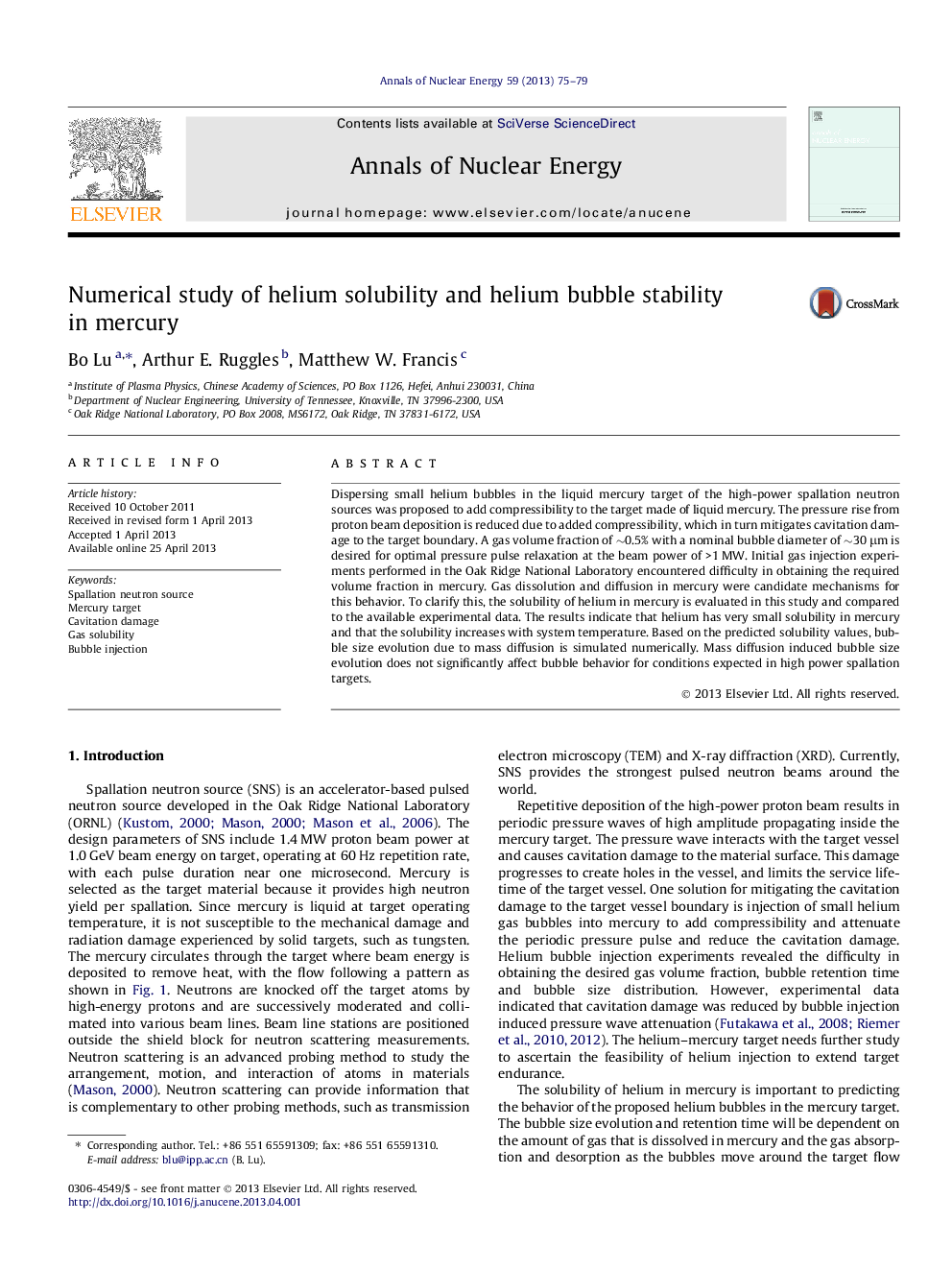| Article ID | Journal | Published Year | Pages | File Type |
|---|---|---|---|---|
| 1728563 | Annals of Nuclear Energy | 2013 | 5 Pages |
•Helium solubility in mercury was numerically evaluated and its small value was experimentally confirmed.•Mass-diffusion dominated bubble evolution is simulated and the bubbles were shown to be stable.•The study indicates that small bubble injection into the mercury target for cavitation damage mitigation is feasible.
Dispersing small helium bubbles in the liquid mercury target of the high-power spallation neutron sources was proposed to add compressibility to the target made of liquid mercury. The pressure rise from proton beam deposition is reduced due to added compressibility, which in turn mitigates cavitation damage to the target boundary. A gas volume fraction of ∼0.5% with a nominal bubble diameter of ∼30 μm is desired for optimal pressure pulse relaxation at the beam power of >1 MW. Initial gas injection experiments performed in the Oak Ridge National Laboratory encountered difficulty in obtaining the required volume fraction in mercury. Gas dissolution and diffusion in mercury were candidate mechanisms for this behavior. To clarify this, the solubility of helium in mercury is evaluated in this study and compared to the available experimental data. The results indicate that helium has very small solubility in mercury and that the solubility increases with system temperature. Based on the predicted solubility values, bubble size evolution due to mass diffusion is simulated numerically. Mass diffusion induced bubble size evolution does not significantly affect bubble behavior for conditions expected in high power spallation targets.
